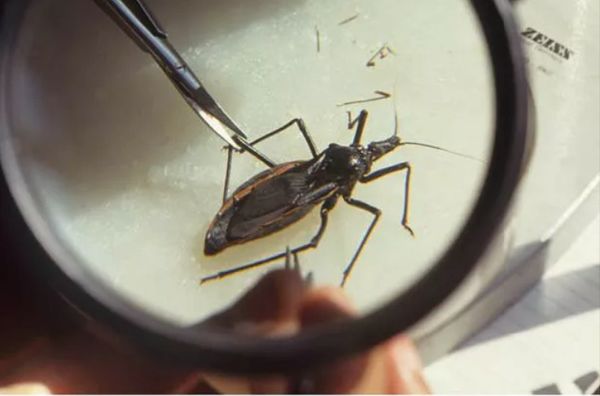A Frightening Night

Emiliana Rodriguez still remembers the chilling night when she witnessed a game of soccer turn into a tragedy. As a young child, she saw one of the players suddenly collapse and pass away on the field. Little did she know that the cause of this tragedy was a silent and deadly disease known as Chagas. In her Bolivian community, she was told that this monster only emerged at night and took lives mercilessly.
A Silent and Silenced Disease
Chagas disease, also known as the “silent and silenced disease,” is spread by nocturnal insects and affects up to 8 million people annually, causing an average of 12,000 deaths across the globe. After moving to Barcelona from Bolivia 27 years ago, Emiliana Rodriguez, now 42, learned that she couldn’t escape the grasp of this monster. She lived in fear, especially at night, afraid that she might never wake up.
A Heartbreaking Discovery
When Rodriguez was eight years old and expecting her first child, she underwent some tests that revealed she was a carrier of Chagas disease. “I was paralyzed with shock and remembered all those stories my relatives told me about people suddenly dying,” she said, recalling the death of her friend. The fear for her baby’s safety consumed her. But fortunately, she received medication to prevent the transmission of the parasite to her unborn child. After her daughter’s birth, she tested negative for the disease.
Unaware of the Silent Killer
In Mexico, Elvira Idalia Hernández Cuevas had never heard of Chagas disease until her 18-year-old daughter was diagnosed with it. Idalia was donating blood in her hometown when her sample tested positive for Chagas. “I was terrified when I saw it described as a silent killer. I didn’t know what to do or where to go,” Hernández said. It was a struggle to find doctors who knew about the disease and could provide the necessary treatment and information.
The Hidden Truth
Chagas disease is often overlooked and misunderstood, leading to delayed diagnosis and treatment. The disease is mainly prevalent in Latin America, but it has spread to other continents as well. Kissing bugs, also known as triatomine bugs, which primarily live in the walls of low-income housing, transmit the T. cruzi infection. These bugs are most active at night when people are sleeping. They bite their victims and defecate on their skin, spreading the infection when the person unknowingly scratches or comes into contact with the bug’s feces.
A Neglected Tropical Disease
Chagas disease is classified by the World Health Organization (WHO) as a neglected tropical disease. This means that it does not receive the attention it deserves from global health policies. The lack of awareness, both among medical professionals and the general population, hampers proper diagnosis and treatment. The social and economic conditions of the affected populations also contribute to the hidden nature of the disease.
A Call for Action
Efforts to combat Chagas disease are slowly gaining momentum. The Chagas Hub, based in the UK, aims to increase testing and treatment, with a particular focus on preventing transmission from mother to child. However, the progress in eliminating the disease is slow, and the WHO’s target of disease elimination by 2030 seems highly unlikely.
The Urgent Need for Better Treatment
Currently, two medications, benznidazole and nifurtimox, are used to treat Chagas disease. However, these drugs have been on the market for over 50 years and are not very effective. They can have unpleasant side effects and may not halt or slow disease progression in adults. More potent medications are urgently needed, but there is little financial incentive for pharmaceutical companies to develop them.
Raising Awareness and Breaking the Silence
Emiliana Rodriguez and Elvira Idalia Hernández Cuevas are on a mission to raise awareness about Chagas disease. Rodriguez, in Spain, is actively involved in a campaign by the Barcelona Institute for Global Health to raise awareness. Hernández serves as the president of the International Federation of Associations of People Affected by Chagas Disease (FINDECHAGAS), advocating for greater attention and resources for the disease.
World Chagas Disease Day
On April 14, the World Health Organization established World Chagas Disease Day to raise global awareness about the disease. The goal is to prevent, control, eliminate, and eradicate Chagas disease by the year 2030. It is crucial to spread the word and encourage testing and treatment for this silent monster.
Protecting Yourself
If you live in an area where kissing bugs are present, the CDC recommends taking the following precautions to avoid infestation:
- Seal cracks and gaps in your home
- Remove wood, brush, and rock piles near your house
- Use screens on doors and windows
- Have pets sleep indoors, especially at night
- Keep your house and outdoor areas clean
- Periodically check for the presence of bugs
Identifying Kissing Bugs
If you suspect you’ve found a kissing bug, do not crush it. Instead, gently place the bug in a container, add rubbing alcohol to the container, and freeze it. Then, take the container to a university lab or your local health authority for identification.
Join the fight against Chagas disease by sharing this story and raising awareness about this silent killer!



